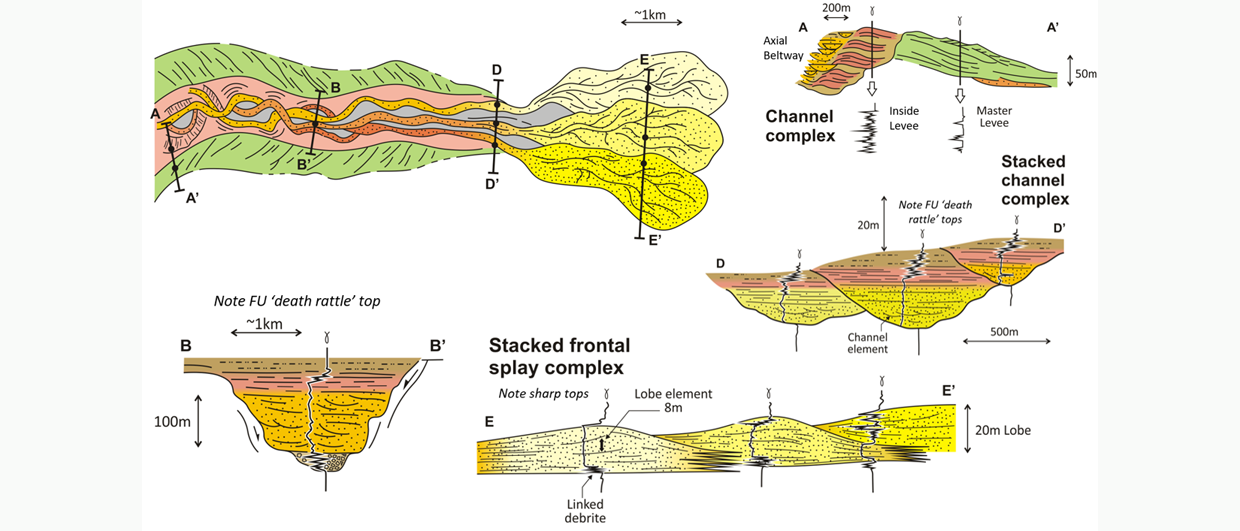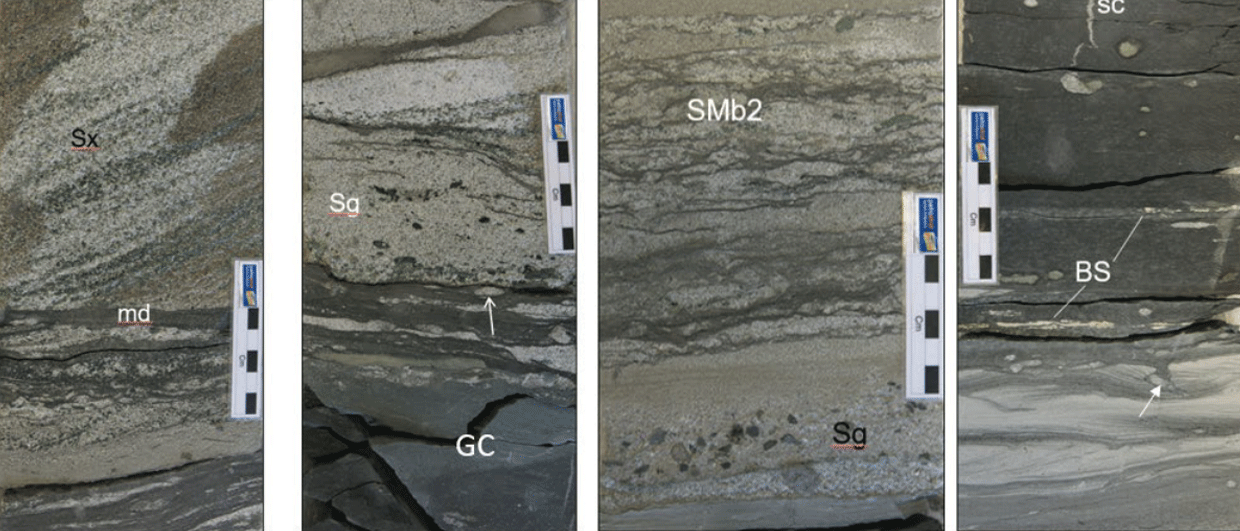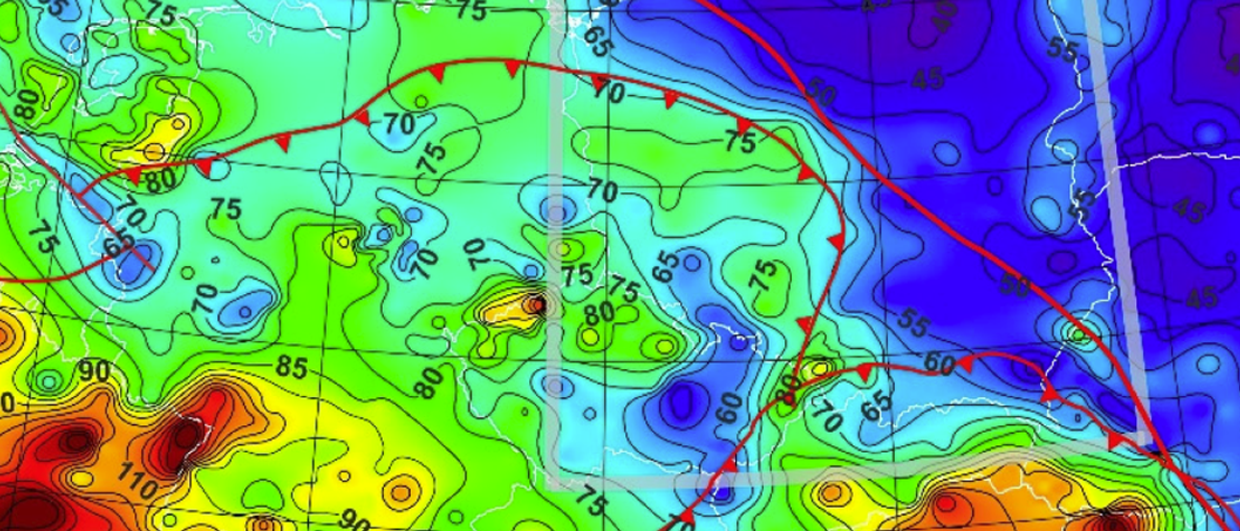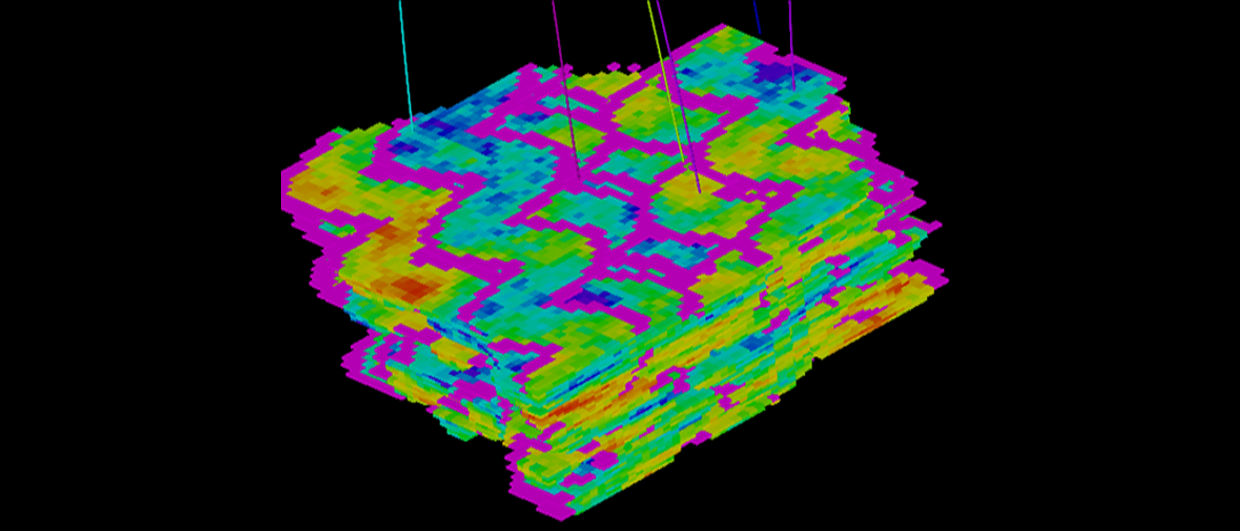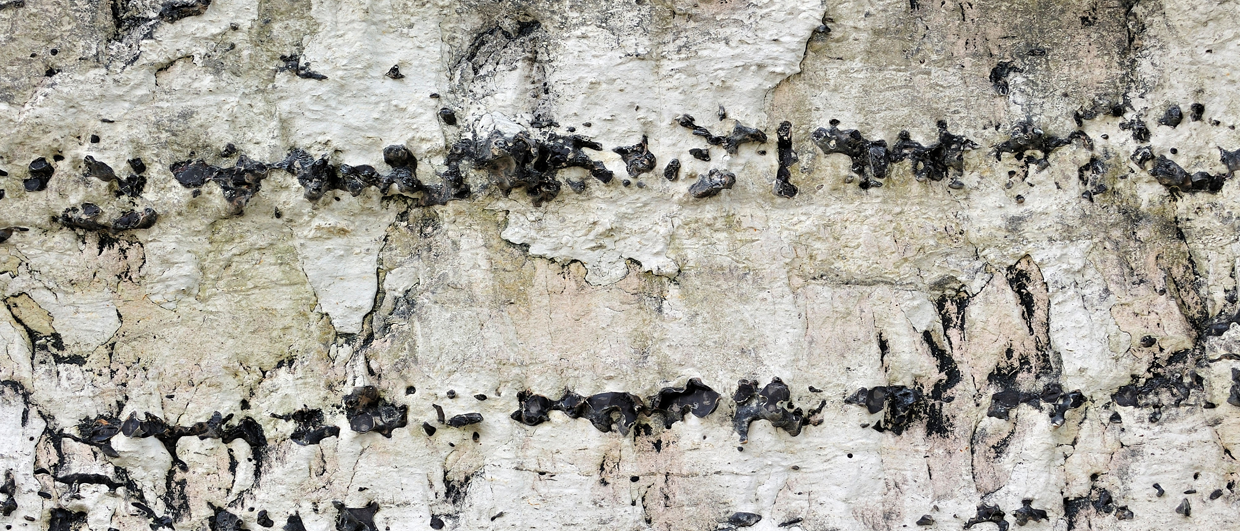Deep-water depositional environments add another level of complexity compared to many other environments”, says expert Bryan Cronin when I visit him in his sea-front cottage in Aberdeen. Bryan has been studying deep-water sediments for decades and is well-known for his beautiful drawings of the broad range of depositional settings associated with deep-water sedimentation.
“Deltas prograde, and topsets or shelfal paralic units form clear sequence stratigraphic packages, but turbiditic successions just switch course”, Bryan explains. “There is no real progradational element in these systems.”

A blocky GR pattern
“There have been attempts to use gamma-ray and other logs to predict where in the depositional system one would be, but the basic challenge is that a blocky gamma-ray can be found in both the proximal as well as in the distal domain”, Bryan adds.
For that reason, he notes that there are always discussions about which part of a deep-water system was drilled. It is a sign that, when the seismic data is not conclusive, there is room for interpretation.
“Drilling a well into the axial part of a distal lobe can result in the discovery of a series of stacked sandstones that have the same appearance in logs as when this well was drilled into a proximal canyon system, and dipmeter logs do not necessarily help either”, he continues.
“The problem is the lateral component in these systems”, Bryan explains. “In that sense, thin beds are more important than the sands in distinguishing in which part of the system one is looking.”
Bryan has also observed that there is a tendency to drill for the up-dip parts of the succession when it comes to planning wells. “That does not necessarily mean that better-quality reservoirs can be expected in the up-dip domain”, he adds. “It is not uncommon to see more reservoir
pinch-outs for instance, which means poor lateral connectivity.”
Poll outcome
Bryan Cronin concludes that it is difficult to distinguish between different parts of a deep-water sedimentary system based on gamma-ray and dipmeter logs alone: “It takes considerable experience to be able to do this and I will challenge everyone to interpret sub-environments from ratty profiles alone.” Yet, 75% of the 48 voters are of the opinion that it is possible.
This is the third and last part of our article series on the recognition of depositional facies on the basis of well logs.
See also:
Is it possible to differentiate between meandering and braided river deposits using gamma-ray logs?

